Those papers mainlyfocuson the research results of the group in 2024 on smart wearable biosensors and biomedicine. The series of results were funded by the National Natural Science Foundation of China, the Joint Fund for Equipping Education, the Shenzhen Key Laboratory, the Shenzhen University 2035 Pursuit of Research Excellence Program, and the Research Fund of Synthetic Biology Research Center of Shenzhen University.
1. Hydrogel functionalized bandage for efficient unidirectional drug delivery and wound care
A hydrogel-functionalized bandage with a bilayer structure with Janus wettability for unidirectional drug delivery and multifunctional wound care is reported. The upper layer of the Janus-patterned bandage has a porous gradient wettability channel, which is responsible for unidirectional drug transfer from the outside to the wound bed (drug transfer efficiency of up to 90%), and prevents the drug from diffusing in an unwanted direction (<8%). The underlying hydrogel consisting of chitosan quaternary (HACC), polyvinyl alcohol (PVA), and polyacrylic acid (PAA) makes it biocompatible, has excellent antimicrobial properties, and hemostatic capacity to promote wound healing. In particular, the hydrogel-functionalized bandages with Janus wettability exhibited excellent mechanical flexibility (~198% strain), adapted well to skin deformations (stretching, bending, or twisting) and maintained unidirectional drug delivery behavior without any leakage. An in vivo whole skin wound model confirmed that the hydrogel-functionalized bandage significantly promoted epithelialization and collagen deposition, and improved drug delivery efficiency, thereby facilitating wound closure and healing (98.10% wound healing rate at day 15). The paper was published in the natural index journal ACS Nano, with Shenzhen University as the sole completion unit.
Link: https://pubs.acs.org/doi/10.1021/acsnano.3c10766
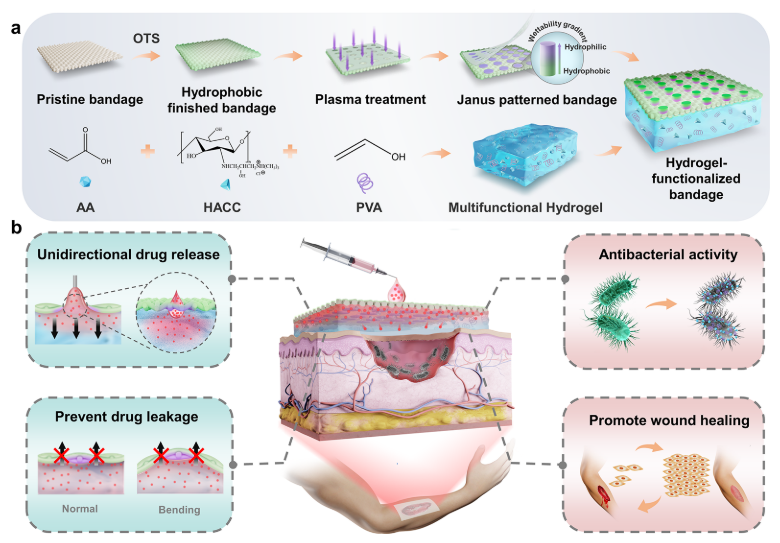
Figure 1. Hydrogel functionalized bandage preparation and its mechanism
2. Self-sterilizing microneedle sensing patch supporting visual monitoring of wound pH value
Intelligent microneedle sensing that inhibits wound infection and tracks wound healing status is proposed. A microneedle tip based on a metal-organic framework (MOF) hydrogel can rapidly self-sterilize and promote wound healing. The microneedle patch's substrate is based on pH-sensitive fluorescent reagents that can be integrated with smartphones to visualize images. In addition, wound pH can be further reliably assessed by applying machine learning algorithms. The multifunctional microneedle sensing patch establishes a combined therapeutic and sensing strategy to address delayed wound management, facilitates the design and optimization of MOF hydrogels, and provides an easy method for disease diagnosis and personalized health management. The paper was published in the Nature Index journal Adv. Funct. Mater. with Shenzhen University as the sole completion unit.
Link: https://onlinelibrary.wiley.com/doi/10.1002/adfm.202315067
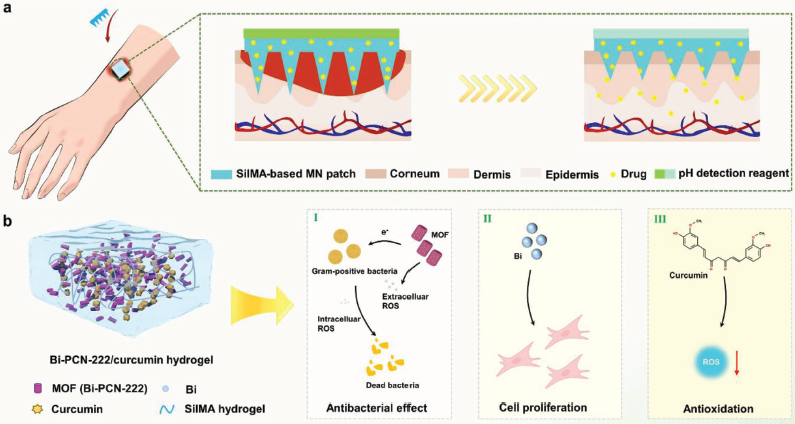
Figure 2. Self-sterilizing microneedle sensing patch mechanism
3. Ultra-low detection limitations and adaptive switchable wearable pressure sensors
A piezoresistive interface based on multi-scale heterogeneity (micro/nanoscale heterostructures and macroscopic heterogeneous cytoskeleton) is proposed to dynamically adapt to specific pressure sensing requirements. The micro- and nanoscale heterogeneous structures in multispike Ag-MnO2 piezoresistive particles enable a low detection limit (0.008 Pa) and the sensing of small pressure increments at high resolution (0.0083%) under high preload. In addition, cytoskeletons with heterogeneous orientation enable anisotropic deformation, i.e., rapid deformation at low pressure and gradual release at high pressure. Compared to sensors with homogeneous or single-scale heterogeneous interfaces, this heterogeneous orientation design provides switchable sensitivity and operating range to distinguish complex pressure sources. The paper was published in the natural index journal ACS Nano, with Shenzhen University as the first completion unit.
Link: https://pubs.acs.org/doi/10.1021/acsnano.3c12513
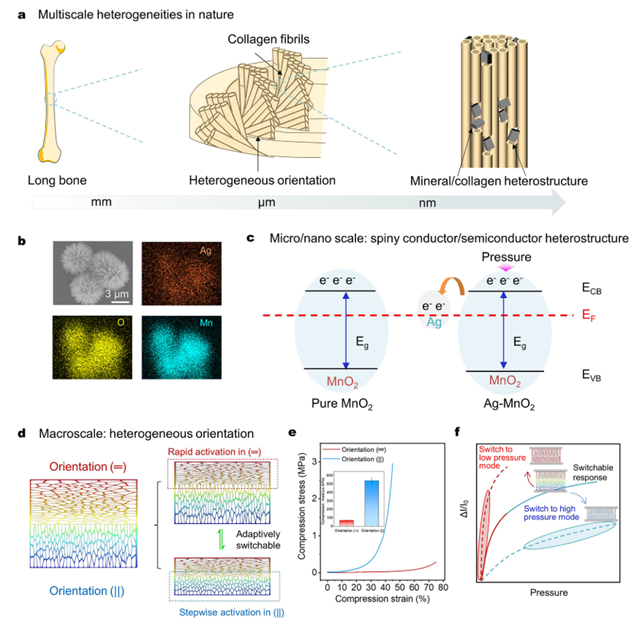
Figure 3. Design of piezoresistive interfaces based on multiscale heterogeneity
4. Wearable colorimetric mask for breath ammonia detection
A wearable and comfortable Janus Colorimetric Face Mask (JCFM) is proposed to assess respiratory ammonia levels by incorporating a machine learning K-Nearest Neighbor (K-NN) algorithm. The Janus fabric, which differs in wettability, allows unidirectional penetration of exhaled moisture to keep the facial skin dry and comfortable. Four different pH indicators on the colorimetric array act as identifying elements that cross-react with ammonia, capturing the optical fingerprint of respiratory ammonia by mimicking the complex olfactory structure of mammals. Euclidean distance (ED) was used to quantitatively characterize ammonia concentrations between 1 ppm and 10 ppm, demonstrating a linear relationship between ammonia concentration and ED response (R2 = 0.988), with a detection limit of up to 0.62 ppm. a K-NN algorithm based on the RGB response characteristics assisted in analyzing the target ammonia levels with a prediction accuracy of 96%. The paper was published in the natural index journal Anal. Chem. and Shenzhen University was the first completion unit.
Link: https://pubs.acs.org/doi/10.1021/acs.analchem.3c04383
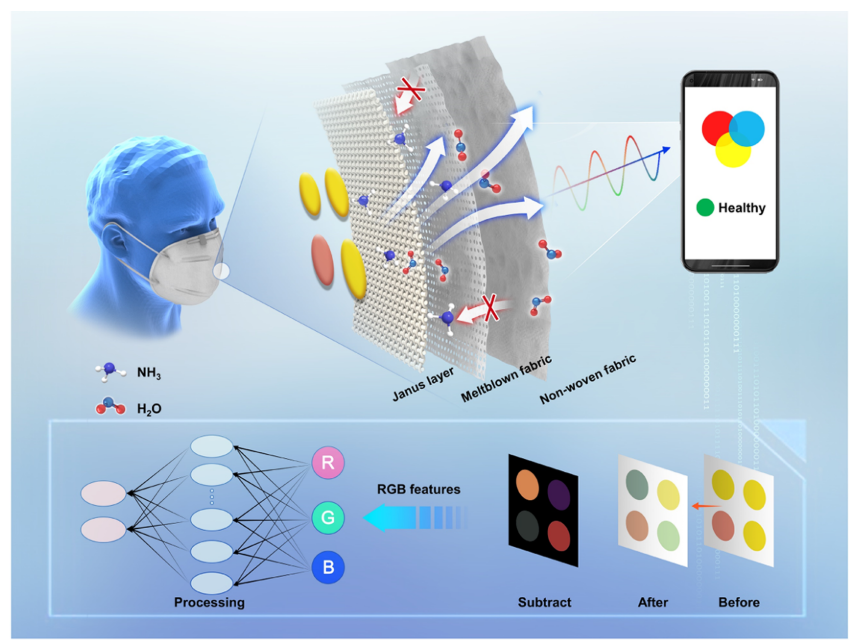
Figure 4. Schematic diagram of a wearable colorimetric mask for breath ammonia detection
5. Machine learning combined with wearable devices for accurate sweat monitoring and related disease prediction
A microsystem containing a monitoring module, signal processing, and wireless communication is reported, and through machine learning this portable platform enables rapid and accurate classification of mixed conditions as well as quantitative detection of Tyr, Trp, and pH after comprehensive analysis of DPV information. By monitoring amino acids and pH in sweat from patients with and without amino acid supplement intake over a two-week period, we found a strong correlation between sweat Tyr and Trp concentrations with 99.3% accuracy. This wearable sensor allows personalized monitoring of sweat amino acids and pH, which is crucial for exercise-health guidance. The paper was published in Biosensors and Bioelectronics, Shenzhen University as the sole completion unit.
Link:https://doi.org/10.1016/j.bios.2024.116712
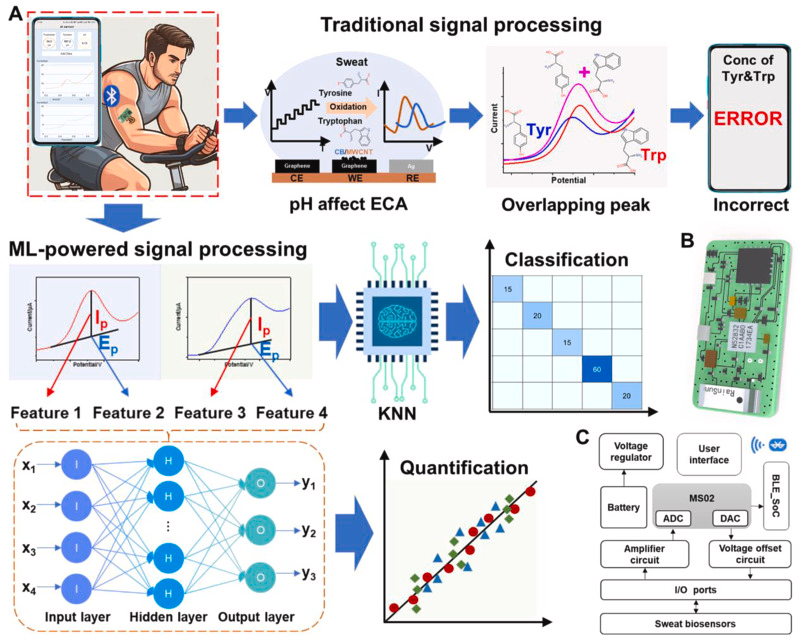
Figure 5. Schematic of machine learning-driven wearable sensors for distinguishing sweat composition and predicting disease
6. Wearable fully integrated microneedle array biosensor for multiple health biomarker monitoring
A miniaturized wearable biosensor with a fully integrated microneedle array is reported for simultaneous and continuous monitoring of health-related biomarkers (e.g., glucose, lactate, and alcohol) during physical activity. The sensor consists of a platinum layer, a conductive polymer layer, an oxidase layer for monitoring the target biomarkers, and a functionalized Nafion protective layer with a microneedle array that has been shown to have excellent biocompatibility, painless penetration of the stratum corneum and access to interstitial fluids for monitoring and analysis, and a high degree of sensitivity. The sensor was found after repeated monitoring of fitness-related biomarkers in multiple subjects over an extended period of time, and the results showed significant correlation with commercial devices. In addition, the data was transferred to a smartphone via Bluetooth and uploaded to a cloud platform allowing for further health assessment. The study is a significant contribution to promoting the development of smart wearable devices in the field of sports and health. The paper was published in Biosensors and Bioelectronics with Shenzhen University as the sole completion unit.
Link: https://doi.org/10.1016/j.bios.2024.116697
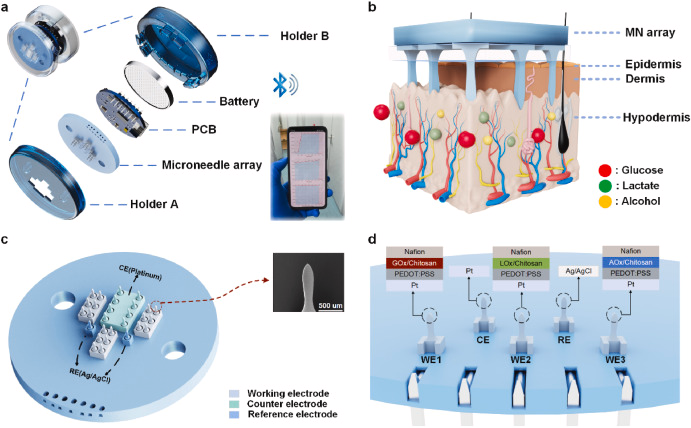
Figure 6. Structure of a wearable transducer system based on multiplexed microneedles and its principles.
7. Fully integrated conformal wearable ultrasound system for continuous acoustic kinetic therapy
A wearable bioelectronic system that enables continuous acoustic kinetic therapy is reported, which combines an ultrasound array patch and consists of a small and compact ultrasound driver circuit board and interactive software that can be used directly and continuously on the skin surface. The flexible piezoelectric ceramic array generates a compliant and flexible ultrasound that can be focused on a certain depth lesion site under the skin with excellent ROS generation facilitation, which ultimately induces cancer cell death and tumor tissue ablation for continuous anti-tumor therapy. The system supports dynamic control of the ultrasound patch and allows real-time adjustments to optimize its performance in a variety of applications, such as spatial tunability of ultrasound focus through patch deformation, e.g., depth and range of ultrasound focus, thus providing greater flexibility and precision in healthcare technology. The integrated wearable ultrasound patch system overcomes the limitations of existing ultrasound devices, including bulky form factor, high price, and cumbersome operation, and is capable of accurately adjusting ultrasound lesion depth and range to provide tailored treatments according to the individual needs of different patients, which has a promising application potential in the field of acoustic power therapy. The paper was published in Advances Materials, a Nature Index journal, with Shenzhen University as the sole completion unit.
Link: https://doi.org/10.1002/adma.202409528
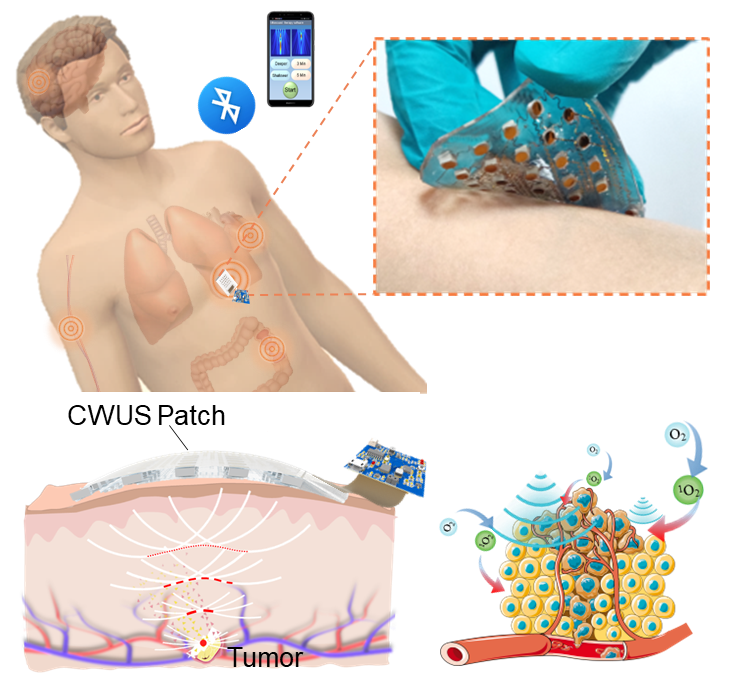
Figure 7. Schematic diagram of a fully integrated form-fitting wearable ultrasound system with continuous sonodynamic therapy and antitumor therapy
8. Integrated Mini-Pillar Platform for Wireless Real-Time Cell Monitoring
An integrated Mini-Pillar platform for in situ monitoring of multiple cellular metabolic processes is reported for media anchoring and cell culture via arrayed Mini-Pillar chips. The platform incorporates surface-functionalized microelectrode biosensors to build an integrated Mini-Pillar biosensing platform capable of real-time, in situ monitoring of cell growth processes in a variety of cells. The arrayed microcolumn chips enable hydrophilic anchoring of media and cell array cultures. The microelectrode biosensor functionalized with polyaniline (PANI) and dendrimer gold exhibits excellent linearity (R2= 0.999) and high pH sensitivity (63.55 mV/pH) over the pH range of 6.0 to 8.0. The excellent biosensing performance makes it broadly applicable for real-time monitoring of pH changes in drug-stimulation-induced cell cultures via the microcolumn biosensing platform. pH changes induced by drug stimulation in cell culture media in real time via the microcolumn biosensing platform. Long-term in situ monitoring also facilitates the assisted cultivation of 3D cell spheroids. This simple, pH-sensitive and biocompatible cell culture biosensing platform provides a new method to monitor cell metabolism and is expected to be a powerful tool for in situ cell culture. The paper was published in Research, a jointly organized by Science Group, with SZU as the sole completion unit.
Link:https://spj.science.org/doi/10.34133/research.0422
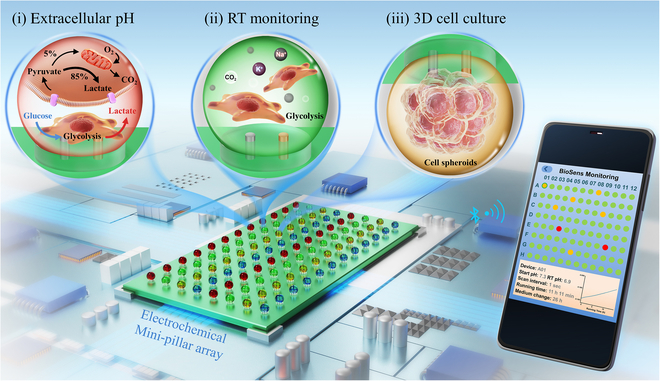
Figure 8. Schematic diagram of an integrated minicolumn biosensing platform for in situ monitoring of cellular metabolic processes
9. Extreme hydrogel bioelectronics
Hydrogels capable of operating under extreme conditions are reviewed, with a focus on their applications in bioelectronic systems, as well as strategies such as material development and structural design that can endow hydrogels with these extreme properties. Current strategies for constructing extreme hydrogels for bioelectronic applications are summarized, including resistance to mechanical damage, shedding, swelling, freezing, and FBR hydrogels. In each case, we specify how extreme conditions can compromise the structure or function of the hydrogel and how different strategies can help mitigate the degradation. Next, potential bioelectronic applications realized by these extreme hydrogels are described. Finally, current challenges and new opportunities for developing extreme hydrogel bioelectronic devices and systems are discussed. The paper was published in the Nature Index journal Adv. Funct. Mater. with Shenzhen University as the second completion unit.
Link: https://doi.org/10.1002/adfm.202405896
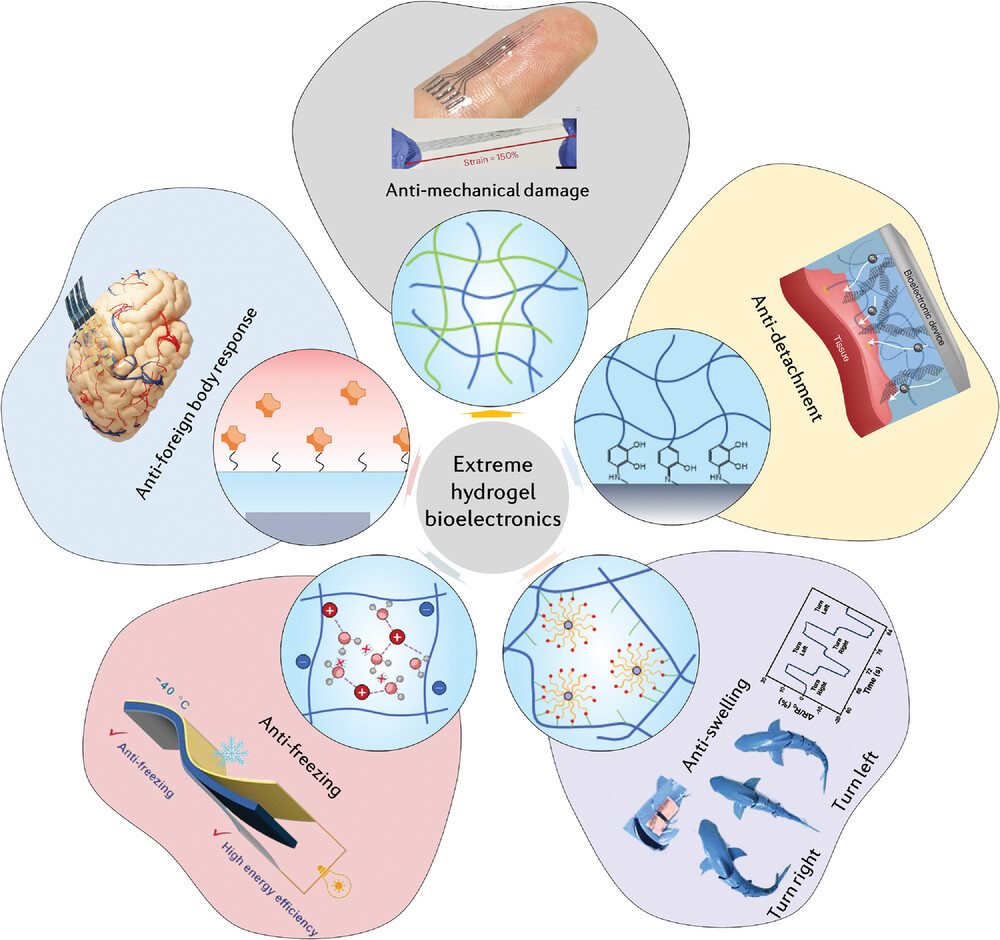
Figure 9. Extreme Hydrogel Bioelectronics including Resistance to Mechanical Damage, Resistance to Swelling, and Anti-freezing Hydrogel Bioelectronics
10. wearable vertical graphene microneedle biosensor for real-time ketogenic diet management
A wearable microneedle biosensor for real-time ketone and glucose monitoring is proposed. The microneedle array has excellent mechanical properties that allow for consistent sampling of mesenchymal biomarkers while reducing the pain associated with skin punctures. Vertical graphene with excellent conductivity provided the resulting sensor with a high sensitivity of 234.18μa mM-1cm-2 and a low detection limit of 1.21μM. During volunteer use, the fully integrated biosensor demonstrated robust dynamic metabolite level tracking performance and analytical capabilities. In addition, the results of the in vivo evaluation correlated significantly with commercial blood measurements. Overall, this cost-effective, fully integrated biosensing device could accelerate the use of ketogenic diets in personal nutrition and health management as well as in the treatment of diseases such as obesity, epilepsy, diabetes, and Alzheimer's disease. The paper was published in the Nature Index journal Anal. Chem. with Shenzhen University as the sole completion unit.
Link: https://pubs.acs.org/doi/full/10.1021/acs.analchem.4c00960
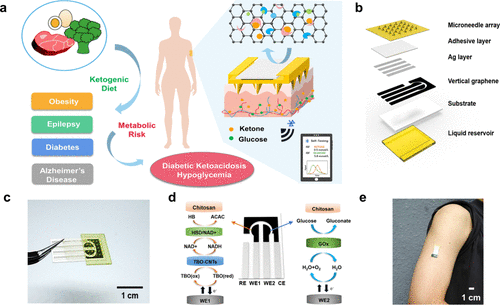
Figure 10. Schematic and image of a wearable microneedle biosensor for real-time ketogenic diet management
11. AI algorithms in biochemical sensors
This review provides an in-depth look at recent advances in integrating AI algorithms, including classification, regression, and clustering techniques, into a variety of biochemical sensors. The discussion covers representative types and functions of AI techniques, with a special emphasis on their applications in electrochemistry, electrochemiluminescence, fluorescence, colorimetry, and Raman spectroscopy. To inspire other researchers to use AI techniques to solve problems rationally and efficiently, we carefully outline specific implementations of AI in a variety of contexts, including assisted diagnosis, precision analysis, performance enhancement, and system optimization. By exploring in detail how AI can play a role in these biochemical sensing domains, the breadth of applications and potential impact on the accuracy and efficiency of sensing technologies are elucidated. Ultimately, we shed light on the challenges and opportunities associated with the convergence of biochemical sensors and AI. It not only highlights the bright prospects for commercialization, but also addresses the barriers that need to be overcome to successfully integrate these technologies. The paper was published in TrAC, Trends Anal. Chem. with Shenzhen University as the sole completion unit.
Link: https://doi.org/10.1016/j.trac.2024.117613
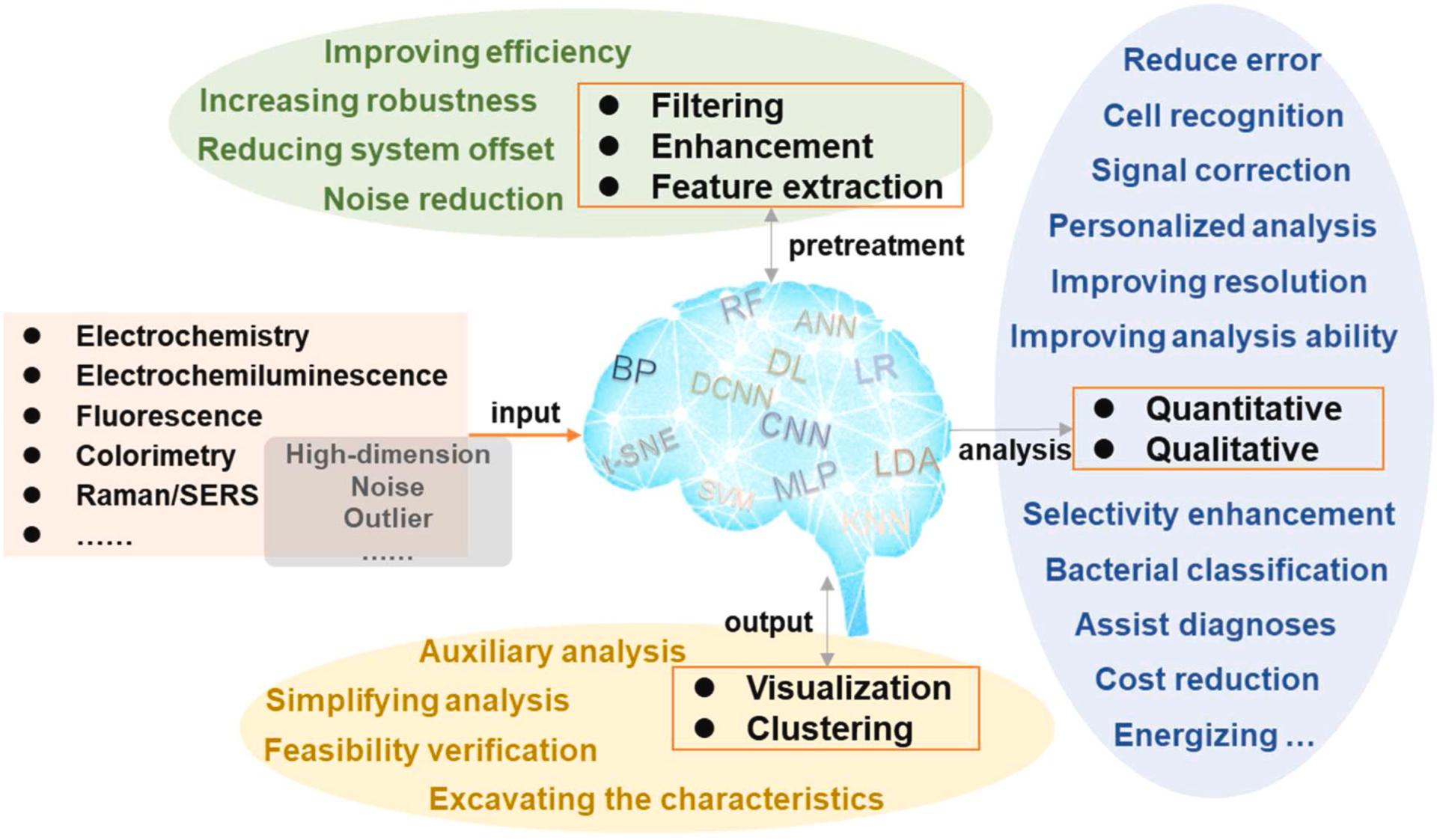
Figure 11. AI algorithms process biochemical sensor data for a variety of purposes and functions


